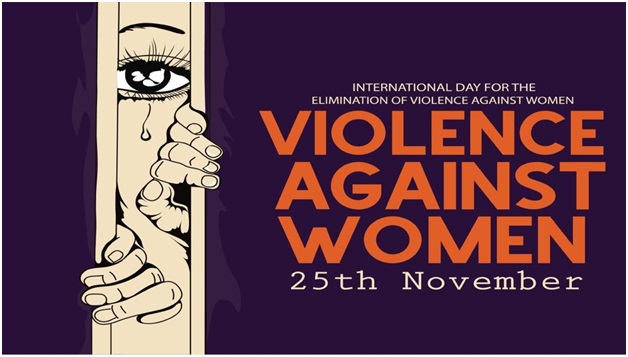Preserving Glaciers: A Cry for Climate Justice and Water Security

- 01 Jun 2025
In News:
In 2025, the United Nations has declared the year as the International Year of Glaciers’ Preservation, underscoring the urgent global need to address the retreat of glaciers. This critical issue was the focus of the International Conference on Glaciers’ Preservation held in Dushanbe, Tajikistan, co-hosted by the Republic of Tajikistan with the support of the UN and attended by leaders and experts from across the globe.
Glaciers, often referred to as the “water towers of the world”, store nearly 70% of Earth’s freshwater. However, accelerating glacier melt—driven by global warming—has become a slow-moving catastrophe. Since 1975, over 9,000 billion tons of glacial ice have been lost. The period from 2022 to 2024 marked the highest recorded glacier mass loss, with many smaller glaciers projected to vanish entirely within this century. This phenomenon threatens not only mountain ecosystems but also global water security, food systems, biodiversity, infrastructure, and human livelihoods.
Developing countries, particularly those in Asia, Africa, and Latin America, face disproportionate vulnerabilities due to glacier retreat. Communities dependent on glacier-fed rivers for drinking water, irrigation, and hydropower are witnessing increased poverty, forced migration, and infrastructure damage. Melting glaciers also contribute significantly to sea-level rise, placing coastal cities and low-lying regions at risk of displacement and flooding, as seen in Nigeria’s Niger Delta and Lagos.
The conference served as a clarion call to transition from pledges to concrete action. It recognized that 83% of global emissions that require mitigation lie with just 35 countries, emphasizing the need for collective ambition. The summit also launched the Decade for Cryosphere Science (2025–2034) and advocated for the establishment of a UN Glacier Preservation Fund to ensure sustained, long-term financing for adaptation.
Key recommendations included:
- Integration of glacier preservation into national climate policies, especially Nationally Determined Contributions (NDCs) and National Adaptation Plans (NAPs).
- Development of early warning systems and predictive tools for climate-related disasters in mountainous regions.
- Investments in data-driven adaptation, using AI and hydrological models to forecast risks and optimize resilience strategies.
- Promotion of gender-inclusive water governance, especially involving women in glacial and water-related decision-making.
- Establishment of hydro-meteorological services for glacier-dependent regions to safeguard water access and ensure resilience.
The Deputy Secretary-General of the UN stressed that resilience pays — every dollar spent on adaptation strengthens economies, protects livelihoods, and mitigates future losses. The upcoming Fourth UN Conference on Financing for Development in Seville and COP30 in Brazil were identified as critical moments to elevate financing and policy commitments.
In conclusion, glacier loss is not merely an environmental concern but a humanitarian and developmental crisis. The protection of glaciers is central to achieving SDG 6 (Clean Water and Sanitation) and must be addressed with the urgency, equity, and international solidarity it demands. The world must act now—so that future generations do not inherit a planet where glaciers and the lifelines they sustain have become a relic of the past.
Violence Against Women (United Nations)

- 25 Nov 2023
Why is it in the News?
- The International Day for the Elimination of Violence Against Women is observed worldwide on November 25 each year, as designated by the United Nations General Assembly.
- 2023 theme of Elimination of Violence against Women: This year’s theme, "UNITE! Invest to prevent violence against women and girls", emphasises the need to fund prevention strategies proactively to stop gender-based violence.
Violence Against Women:
- According to United Nations (UN) data, one in three women worldwide experience physical or sexual violence, mostly by an intimate partner, affecting approximately 736 million women globally.
- This alarming trend extends beyond traditional settings, seeping into workplaces and online spaces, further exacerbated by post-pandemic repercussions, conflicts, and climate change.
- Violence against women and girls is a human rights violation, and the immediate and long-term physical, sexual, and mental consequences for women and girls can be devastating, including death.
- Violence negatively affects women’s general well-being and prevents women from fully participating in society.
- It impacts their families, their community, and the country at large.
- It has tremendous costs, from greater strains on health care to legal expenses and losses in productivity.
Statistics on Violence against Women in India:
- Intimate Partner Violence (IPV) is recognised as a pervasive social issue and a significant public health challenge.
- Recent global estimates indicate that over 25% of women of reproductive age, who have ever been in a relationship, have faced physical, sexual, or both forms of IPV—reaching an average of 35% in South Asia.
- According to the National Library of Medicine, 32% of ever-married Indian women reported experiencing physical, sexual, or emotional violence from their husbands.
- In India, the prevalent spousal violence are physical (28%), emotional (14%) and sexual (6%).
- The National Crime Records Bureau (NCRB) reported 428,278 cases of crimes against women in 2021, marking a 15.3% increase from 2020 (371,503 cases).
- The majority of these cases under the Indian Penal Code were classified as:
- "cruelty by husband or his relatives" (31.8%)
- "assault on women with intent to outrage her modesty" (20.8%)
- "kidnapping and abduction of women" (17.6%), and "rape" (7.4%).
- The crime rate, registered per lakh women population, rose to 64.5 in 2021 from 56.5 in 2020.
History of Elimination of Violence against Women:
- It dates back to 1981 when women’s rights activists began marking 25 November as a day against gender-based violence.
- This day pays homage to the Mirabal sisters—three Dominican political activists brutally murdered in 1960 by order of the country’s ruler, Rafael Trujillo (1930-1961).
- In a significant stride towards combating violence against women, the UN General Assembly, in December 1993, adopted the Declaration on the Elimination of Violence against Women, laying the groundwork for global efforts to eradicate such violence.
- In February 2000, the UN General Assembly, officially designated 25 November as the International Day for the Elimination of Violence Against Women.
- This resolution urged governments, international organizations and NGOs to unite in organizing activities annually on this date, fostering public awareness and collective action to address and eliminate violence against women and girls worldwide.
Factors Influencing Violence:
- Men's Predisposing Factors: Men are more likely to engage in violence if they have low education, a history of maltreatment in childhood, witnessed domestic violence against their mothers, misuse alcohol, hold unequal gender views supporting violence, and possess a sense of entitlement over women.
- Women's Vulnerability Factors: Women are more likely to face intimate partner violence if they have lower education, witnessed their mothers being abused, experienced childhood abuse, and hold attitudes accepting violence, male privilege, and the subordinate status of women.
- Effective Interventions: Advocacy and empowerment counseling, along with home visitation, show promise in preventing or reducing intimate partner violence against women.
- Impact of Conflict and Displacement: Situations of conflict, post-conflict, and displacement can worsen existing violence, including by intimate partners and non-partner sexual violence.
Root Causes of Violence Against Women:
- Gender Disparity: Gender inequality deeply ingrained in society exposes women to various forms of violence.
- Discriminatory gender norms and stereotypes contribute to structural inequality.
- Psychiatric Morbidity: Psychiatric morbidity encompasses both physical and psychological deterioration due to mental or psychological conditions, often linked to alcohol consumption.
- Regular alcohol consumption by husbands correlates strongly with poor mental health in women. Alcohol serves as a situational factor, heightening the risk of violence by diminishing inhibitions and impairing judgment.
- Sociodemographic Factors: Patriarchy is a significant contributor to violence against women.
- Higher economic status and perceived power of women to challenge traditional gender roles increase the risk of violence.
- Family Factors: Exposure to harsh physical discipline and witnessing parental violence during childhood predicts victimization and perpetration of violence in adulthood.
- Traditional and Cultural Practices: Female genital mutilation leads to severe physical and psychological consequences.
- Acid attacks, driven by family disputes or rejection of marriage proposals, cause disfigurement and trauma.
- "Honour killings" in various countries uphold the family reputation, justifying violence for reasons like alleged adultery or disapproved relationships.
- Early marriages, with or without consent, undermine the health and autonomy of girls, constituting a form of violence.
- Judiciary and Law Enforcement: An insensitive, inefficient, and corrupt judicial system and law enforcement machinery fail to deter various forms of crimes.
- Sociocultural Factors: Deep-rooted stereotypes confining women to primary roles of marriage and motherhood persist.
- The stigma associated with unmarried, separated, or divorced status perpetuates gender-based violence.
- The custom of dowry remains prevalent in Indian marriages, contributing to the problem
Impact of Violence Against Women:
- Health Ramifications: Violence, regardless of its form, profoundly affects women's physical, mental, sexual, and reproductive health.
- Adverse consequences extend to self-esteem, work capacity, and decision-making abilities concerning fertility.
- Economic Implications: Violence against women carries significant economic repercussions for both individual households and the nation.
- Direct Costs: These include the loss of income, productivity, healthcare expenses, and the cost of social services.
- Indirect Costs: Impact on child well-being, female and child mortality, and the intergenerational social and psychological toll.
- Development Challenges: Violence acts as a barrier to women's participation in development and planning programs at both micro and macro levels.
- It restricts women's freedom to act or move freely, hindering their access to and experience of the benefits of development.
- Violence poses a challenge to poverty alleviation programs, impeding the equitable distribution of resources.
- Rights Impediment: Any form of violence against women obstructs the realization of their fundamental rights as outlined in Article 14, 21, 19, and 32 of the Indian Constitution.
Way Forward to Addressing Gender-Based Violence:
- Gender-Based Legislation: Enact and rigorously enforce legislation that promotes gender equality, addressing discrimination against women in marriage, divorce, custody laws, inheritance laws, and asset ownership.
- Financial Empowerment: Enhance women's access to paid employment opportunities, fostering financial independence.
- National Plans and Policies: Develop and allocate resources for national plans and policies dedicated to addressing violence against women comprehensively.
- Enhanced Crime Surveillance: Improve the systems for collecting crime surveillance data specifically related to violence against women.
- Capacity Building and Training: Provide comprehensive training to service providers and law enforcement officers, enabling them to effectively handle cases of violence against women.
- Prevention of Recurrence: Implement strategies to prevent the recurrence of violence by early identification of women and children experiencing abuse and offering appropriate referrals and support.
- Promotion of Egalitarian Norms: Integrate the promotion of egalitarian gender norms into life skills and comprehensive sexuality education curricula for young people.
- Gender-Based Surveys: Generate evidence on effective strategies and the magnitude of the issue by conducting population-based surveys.
- Include violence against women in demographic and health surveys, surveillance, and health information systems.
